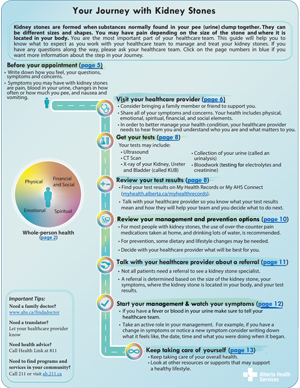This guide will help you know what to expect as you work with your healthcare team to manage and treat post-menopausal bleeding.
You will have your own journey with post-menopausal bleeding. How you move through your journey, the number of visits with your healthcare team, the steps you take, and the order you take them in will depend on your needs. You will make decisions in partnership with your healthcare team. Always follow your healthcare team’s advice.
What is post-menopausal bleeding?
Menopause is the point in your life when you have not had a menstrual period for 1 year. Menopause usually happens around age 50. But everyone’s body is different.
You may stop having periods in your mid-40s. Or keep having periods well into your 50s.
When you enter menopause, are not taking hormone therapy, and are no longer having menstrual periods, any uterine bleeding is abnormal.
What causes post-menopausal bleeding?
There can be many causes, including:
- thinning of the tissues that line the vagina and uterus
- cancer or precancerous changes in the lining of the uterus
- growths such as polyps or
fibroids
- infection of the uterus
- medicines such as blood thinners or anticoagulants
Whole-person health
The whole-person health approach will help you and your healthcare team better manage your health condition.

Whole-person health draws from the teachings of the medicine wheel. It means thinking about all parts of your health and wellness:
- physical
- financial and social
- spiritual
- emotional
These parts are all connected and impact each other. It’s important to be aware of your personal needs in each part and to share that information with your healthcare team. Your healthcare team needs to understand who you are and what matters to you.
Support and resources
- If you need a family doctor, visit Alberta Health Services:
Find a doctor.
- If you need a translator, let your healthcare provider know.
- If you need health advice any time, day or night, call Health Link at 811.
- If you need to find programs and services in your community, call or text 211 or visit
211 Alberta.

Post-Menopausal Bleeding Pathway
Download or print the
full patient pathway (PDF) and
summary (one-page PDF) to learn more about how to manage and treat post-menopausal bleeding.
Patient Pathway  Summary
Summary 
